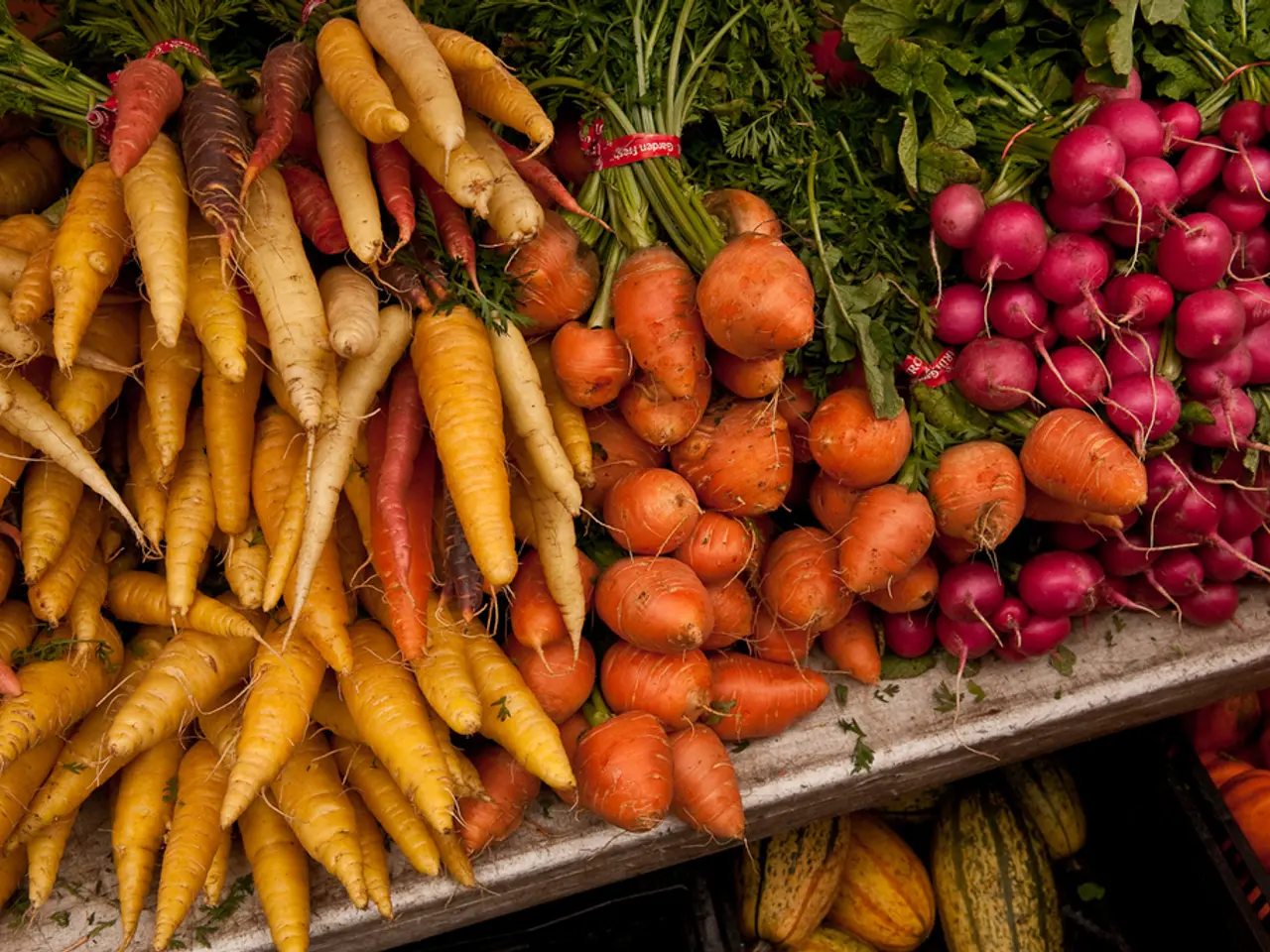Growing bountiful and superior pumpkins by cultivating them alongside these 7 strategic plant partners
In the world of gardening, companion planting plays a crucial role in growing healthy and bountiful pumpkins. By carefully selecting plants that complement each other, gardeners can improve yield, reduce pests, and ensure a successful pumpkin crop.
Pumpkins thrive best in a sunny and protected spot, with fertile and well-draining soil. To avoid competition for water and nutrients, it's essential to choose companion plants wisely.
Marjoram, radishes, nasturtiums, catnip, beans, and sunflowers are some of the best companions for growing pumpkins. These plants not only attract pollinators but also repel or trap common pumpkin pests, enhancing pumpkin growth.
Marjoram, a fantastic aromatic perennial herb, repels squash bugs, a major pumpkin pest. It also attracts pollinators and is popular in Mediterranean cooking. Radishes deter squash vine borer and act as a trap plant for flea beetles when grown among pumpkin plants.
Nasturtiums attract beneficial predatory insects and serve as trap plants, diverting aphids and other pests away from pumpkins. Catnip, with its natural repellent compound nepetalactone, repels squash bugs, flea beetles, flies, and mosquitoes while attracting pollinators.
Beans and corn, when planted together in the famous 'Three Sisters' companion planting scheme, offer mutual benefits. Corn provides natural trellises and beans fix nitrogen in the soil, benefiting pumpkin growth. Pumpkins act as living mulch, suppressing weeds and protecting soil moisture.
Sunflowers, planted around the edges of the pumpkin patch, attract pollinators and provide some structural support or wind protection.
Chamomile, known to replenish nutrients such as potassium and calcium in the soil, aids in developing and ripening fruits and preventing blossom end rot in pumpkins.
However, it's important to avoid companion planting cucumbers and brassicas with pumpkins as they can introduce pests or diseases.
By combining these companions, pumpkin growers can achieve better pollination, reduce pests naturally, support healthier vines, and potentially increase yields. Sunflowers attract bees and other pollinators, helping to pollinate pumpkin plants and guaranteeing a good pumpkin crop. Chamomile attracts beneficial pollinators and natural predators that help deal with pest populations, boosting the yield and combating potential pest problems.
Embrace the power of companion planting and watch your pumpkin patch flourish!
[1] "The Vegetable Gardener's Bible" by Edward C. Smith [3] "Carrots Love Tomatoes: Secrets of Companion Planting for Successful Gardening" by Louise Riotte [5] "The Complete Guide to Companion Planting" by H.H. Reemsnyder
Read also:
- Wawa avian tests positive for West Nile disease
- The market for Kraft Lignin is projected to increase at a rate of 7.2% each year until 2034.
- Revising hair care practices with cynorrhodon extracts for addressing hair fragility
- Filipino Card Games Find Their Home at Gamezone, Offering an Unmatched Experience!





